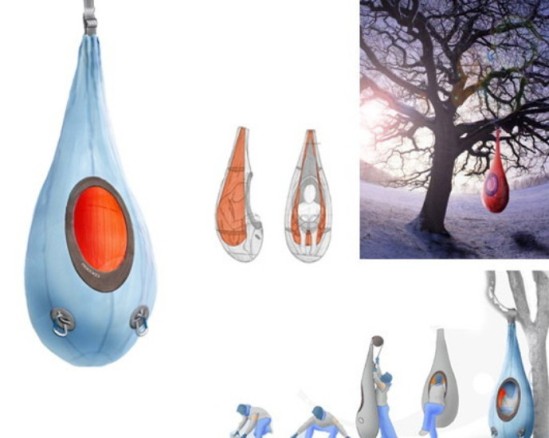
Natural disasters are the most unexpected factor that can cause millions of people displaced and homeless in a jiffy. According to an estimate, annually 200 million people are displaced by natural disasters. The need for disaster relief housing is universal, since earthquake, hurricane, flood, or any form of catastrophic events can strike any place in the world without any warning.
A solid and durable housing solution will assist survivors in a big way in their efforts to recover from the shock and rebuild their collapsed life. A sustainable disaster relief home constructed based on eco-friendly principles can be the most preferred one, as it lends an environmentally sustainable hand to the earth. It is good news that there are a range of sustainable relief shelters available. Given below is a brief account of different eco-friendly disaster relief housing models with futuristic design perspectives.
1. ReadyShelter
ReadyShelter has been designed as a sustainable disaster relief housing and can be assembled quickly and easily. It has the approval of Federal Emergency Management Agency (FEMA), and was originally crafted to offer disaster relief housing after Hurricane Katrina hit the US. Made of pre-engineered steel and CAF panel building system, ReadyShelter flaunts green features such as low carbon footprint and the use of low VOC emitting materials ensuring high air quality. The shelters are claimed to be energy efficient and thermal resistant.
2. M4 – Prefabricated Building Systems
This is a sustainable approach to disaster relief housing that can be dismantled and re-organized into long term community shelters. The structure is made of PreFab-ReFab panels and used materials can be incorporated into the design to support the environment. The design is based on LEED Platinum building practices and features sustainable and robust materials.
3. Eco Cottage
Developed by Advanced Research Institute at Virginia Tech, Eco Cottages are designed as an eco-friendly alternative to traditional disaster housing solutions. It was originally created for Katrina disaster victims. The LEED-Silver certified structures offer energy efficiency, moisture and rot resistance, and superior air quality.
4. Mark Meyersâs temporary disaster relief home
This is an earthquake-proof home designed by Mark Meyer, a Camas homebuilder. The temporary shelters are perfectly recyclable and can be dismantled. Though this house has the appearance of a wood-framed home, it is constructed from recycled steel alone. Designed in such a way that these disaster relief shelters are completely recyclable and can be totally disassembled.
5. Cocoon Emergency Shelter
This is a uniquely-shaped disaster shelter designed by John Moriarty. Shaped to resemble a cocoon, these beautiful structures can be suspended from a tree ensuring zero carbon footprints. Victims can shelter themselves inside the warm interiors of these cocoons.
6. Softshelters by Molo
Conceived by design company Molo, Softshelters can be quickly dismantled and reassembled into comfortable shelters. It features totally recyclable walls that can be pulled together with magnetic clips. Any forms of spaces can be created with this frame easily.
7. Rochester Earth House
These disaster houses were made for Haiti victims by students from Freedom School in Rochester. Inspired by eco-friendly ideas, these shelters known as ‘Earth House’ are constructed from sandbags and dirt. The interiors are neatly designed featuring kitchens and bathrooms.
8. Uber Emergency Shelter
This eco-friendly disaster relief structure is conceived by Rafael Smith. Uber Emergency Shelter can be assembled on the spot with simple tools and can accommodate two to three rooms. Completely made of recyclable and reusable materials, this sustainable shelter can be configured in the desired way to include other vital amenities.
9. SunShower SSIP house
Designed by architect Judith Kinnard, FAIA, this structure is the winner of Reose Sustainable Building Design Competition held in 2010. This eco-friendly and energy-efficient disaster shelter is designed to survive adverse environmental conditions. SunShower SSIP house produces its own power, and few windows are features to accomplish the thermal envelope function. The house is equipped with water harvesting system, photovoltaic panels, and a wind turbine. Tiffany Lin served as the project architect for the project.
10. ARK
ARK is a disaster relief shelter project designed by Russian architect Alexander Remizov. This earthquake-proof shelter is crafted to meet the housing needs of regions affected by rising tides. Made of timber, plastic and steel, ARK is equipped with solar panels wind power generator and other energy efficient elements.
Recent catastrophic events in Japan, Haiti, Chile, Pakistan and Indonesia have made more architects and companies regarding the worldwide need for sustainable disaster relief shelters. More of such durable and sustainable designs can be expected in future.


